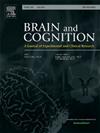探讨白质高信号对灰质萎缩和认知能力下降的影响
IF 1.4
3区 心理学
Q3 NEUROSCIENCES
引用次数: 0
摘要
白质高强度(WMHs)与阿尔茨海默病(AD)的灰质体积(GMV)和认知能力有关。然而,WMHs如何影响AD患者的大脑结构和认知的详细模式需要更多的研究。我们检查了42例AD患者,54例轻度认知障碍,59例正常对照。通过各种相关分析,我们探讨了WMHs、GMV和认知功能之间的关系。结果表明,WMH显著影响AD患者脑萎缩,其中WMH总体积、皮层下WMH体积和最大单个WMH体积影响最大。皮层下脑容量显著影响日常生活工具活动得分,而最大脑容量影响认知测量。这些结果表明,特定的WMH亚型,特别是皮质下体积和大病变,在AD患者的GMV萎缩和认知能力下降中起关键作用。我们的研究结果支持神经血管机制驱动神经退行性变,强调针对血管问题的早期干预对减缓AD进展的重要性。重点:该研究调查了白质高信号的特定亚型,揭示了它们对灰质萎缩和认知能力下降的影响,以确定阿尔茨海默病进展的潜在生物标志物。本文章由计算机程序翻译,如有差异,请以英文原文为准。
Exploring the impact of white matter hyperintensities on gray matter atrophy and cognitive decline
White matter hyperintensities (WMHs) are linked to gray matter volume (GMV) and cognitive abilities in Alzheimer’s disease (AD). However, the detailed patterns of how WMHs affect brain structure and cognition in AD require more study. We examined 42 AD patients, 54 with mild cognitive impairment, and 59 normal controls. Using various correlation analyses, we explored the relationships between WMHs, GMV, and cognitive function. The findings indicate that WMHs significantly influence brain atrophy in AD, with total WMHs volume, subcortical WMHs volume, and the largest single WMH volume having the most impact. Subcortical WMHs volume notably affected Instrumental Activities of Daily Living scores, while the largest WMH volume influenced cognitive measures. These results highlight that specific WMH subtypes, especially subcortical volume and large lesions, play a pivotal role in GMV atrophy and cognitive decline in AD. our results support a neurovascular mechanism driving neurodegeneration, emphasizing the importance of early interventions targeting vascular issues to slow AD progression.
Key points: The study investigated specific subtypes of white matter hyperintensities, revealing their impact on gray matter atrophy and cognitive decline, to identify potential biomarkers for Alzheimer’s disease progression.
求助全文
通过发布文献求助,成功后即可免费获取论文全文。
去求助
来源期刊

Brain and Cognition
医学-神经科学
CiteScore
4.60
自引率
0.00%
发文量
46
审稿时长
6 months
期刊介绍:
Brain and Cognition is a forum for the integration of the neurosciences and cognitive sciences. B&C publishes peer-reviewed research articles, theoretical papers, case histories that address important theoretical issues, and historical articles into the interaction between cognitive function and brain processes. The focus is on rigorous studies of an empirical or theoretical nature and which make an original contribution to our knowledge about the involvement of the nervous system in cognition. Coverage includes, but is not limited to memory, learning, emotion, perception, movement, music or praxis in relationship to brain structure or function. Published articles will typically address issues relating some aspect of cognitive function to its neurological substrates with clear theoretical import, formulating new hypotheses or refuting previously established hypotheses. Clinical papers are welcome if they raise issues of theoretical importance or concern and shed light on the interaction between brain function and cognitive function. We welcome review articles that clearly contribute a new perspective or integration, beyond summarizing the literature in the field; authors of review articles should make explicit where the contribution lies. We also welcome proposals for special issues on aspects of the relation between cognition and the structure and function of the nervous system. Such proposals can be made directly to the Editor-in-Chief from individuals interested in being guest editors for such collections.
 求助内容:
求助内容: 应助结果提醒方式:
应助结果提醒方式:


